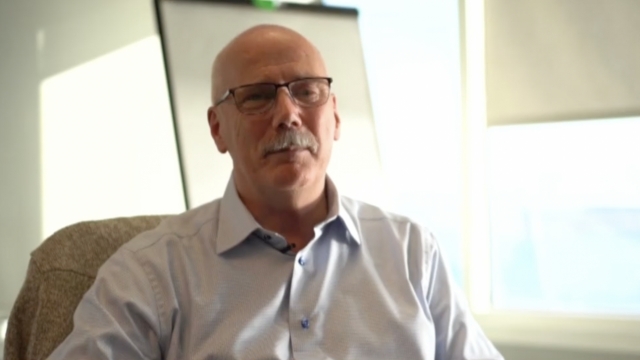From the Puget Sound Pilots headquarters in downtown Seattle, with a view of Puget Sound as a backdrop, Capt. Ivan Carlson Jr. walks Scripps News' Vanessa Misciagna through an unfolding situation: A cargo ship loses power and a pilot is turning the boat around to safely dock.
"I love ship-handling," said Carlson, a maritime pilot of 18 years. "When you do a good job and you just walk away and the captain says, 'Good job, pilot. Thank you.' Right? And so it feels good to do it right."
Carlson is also the executive director and president of Puget Sound Pilots, an organization of marine pilots that work in Puget Sound, a 95-mile-long body of water in the heart of Western Washington State.
However, the role of a pilot is one that many people outside the world of mariners do not know exists.
"They're high-level maritime professionals who have received very specialized training, making them local-knowledge subject-matter experts for inland waters," said Jaimie Bever, executive director of the Washington State Board of Pilotage Commissioners.
What that means is whenever a ship participating in international trade navigates toward a port from open ocean, a maritime pilot, specially trained to know the ins and outs of that specific waterway, meets the ship, climbs on board and navigates the vessel safely to its end destination.
This includes foreign container ships, cargo ships, cruise ships, and even some yachts.
The pilot knows every jetty, every lighthouse, every obstacle in their local waterway and helps maneuver the large vessel around all of it. According to the American Pilots Association, there are about 1,200 pilots in the country who work in 24 coastal states as well as in the Great Lakes.
SEE MORE: Workers recover bodies of 2 victims from Baltimore bridge collapse
"Any little thing can go wrong and you have to be able to act very quickly. The ships are so big that there's no sudden moves that can fix anything. It takes a long time to stop. It takes a long time to turn. So, you know, just being completely aware of what's going on around you at all times is very important," said Bever.
Training to be a pilot is a long, difficult process. Sea captains with years of experience under their belt already, need to pass a test, then undergo hundreds of training trips. It can take 18-24 months to finish training, and that's not guaranteed.
Carlson says it's necessary to make sure every pilot is cool under pressure and a confident decision maker.
"[Licensed pilots] can only intervene three times, and the fourth time you're out of the program," said Carlson.
Carlson says pilots are the elite of the elite of the maritime industry, and they are paid accordingly. It depends on where they operate, but some pilots can make up to $400,000-$500,000 a year. But it's a job that does not come without risk.
One of the most dangerous parts of the job is getting onto the vessel in the first place. Pilots strap on a helmet and climb a ladder onto the side of the ship while it's still moving.
"That first step that can really kill you," said Carlson.
It's high-risk, but for people who love the water, it can be a rewarding way to earn a good living.
Trending stories at Scrippsnews.com




